Illinois Crop Update – August 2, 2024
Emily Hansen – Commercial Agriculture Educator
LaSalle County
Soil Conditions: Mildly Wet (soil is wetter than normal, local vegetation is healthy)
We have gotten quite a bit of rain in the last week in LaSalle County, with most areas seeing between 2-3 inches. Some areas in Bureau County received up to 4 inches of precipitation in the past week. With this, many fields have fairly saturated soils, but I have not noticed any ponding. Overall, crops are looking very good and progressing well. I have not seen excessive disease or pest pressure in most fields. Corn is at R3 (milk), and soy is at R5 (beginning seed). Weeds are getting very large in some fields though (see image of waterhemp).
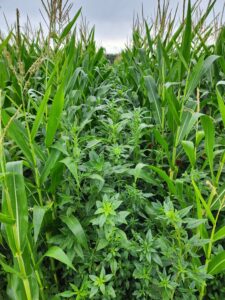
Figure 1: Lots of waterhemp at this field in LaSalle County
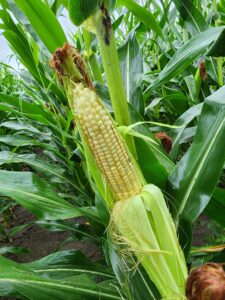
Figure 2: R3 corn in LaSalle County
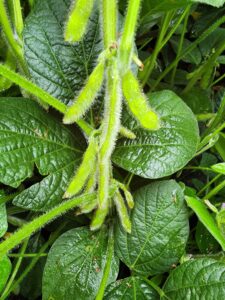
Figure 3: R5 soybean in LaSalle County
Russ Higgins – Commercial Agriculture Educator
Grundy County
Soil Conditions: Near Normal
As July ends warmer temperatures and humidity returned to NE Illinois. While some appreciate seeing a sunrise mist with morning coffee, I think of extended leaf wetness on crops and that it often favors fungal leaf diseases. Despite these occurrences, I continue to see very limited leaf disease symptoms in corn or soy. From a maturity standpoint in fields visited, corn is transitioning from R3 (milk) to R4 (dough) stage. The starch within the kernel is converting from a liquid to a pasty consistency. R4 is often the shortest reproductive stage dependent on environmental conditions. Soy has reached R4 or the full pod stage. At this stage a ¾ inch (2 cm) pod can be found on one of the 4 uppermost nodes on the main stem. R4 through R6 (full seed) is a critical time for the soybean plants exposed to environmental stresses. Issues at this time can cause more significant yield decreases than other growth stages. Recently Dr. Doris Lagos (USDA-ARS) at the University of Illinois reported finding corn aphids in the suction trap network and in fields.
https://suctiontrapnetwork.org/data/
Several have corroborated finding corn aphids and suggested treating specifically for the pest. In my scouting visits I am finding corn aphid populations where I often find them, on plants at or near field edges, and at very low densities (random mostly singular plants).
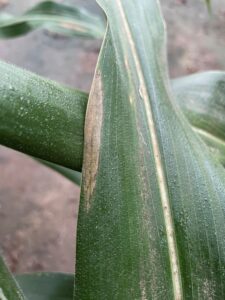
Figure 4: Northern corn leaf blight
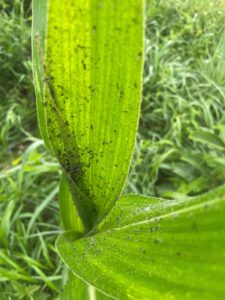
Figure 5: Corn aphids
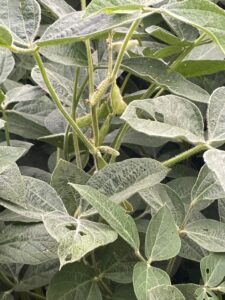
Figure 6: R4 Full pod soybean
Reagan Tibbs – Commercial Agriculture Educator
Logan County
Soil Conditions: Moderately Wet (soil is damp, standing water may be present in low areas, water bodies are full)
The last few mornings have brought significant rainfall across Logan, Menard, and Sangamon counties. High winds have accompanied this rain, but no crop damage has been observed or reported. While this rain has replenished some drier areas, it has caused a lot of standing water in the low-lying areas. The forecast for the next couple of days looks to be much of the same: rain in the morning with high temps and humidity in the afternoon. Crop progress remains steady. While these rains are beneficial, these humid and hot days are perfect conditions for crop diseases to flourish. No reports of diseases have been made in this area, but producers are keeping a close eye on their fields.
Doug Gucker – Local Food Systems and Small Farms Educator
Dewitt, Macon, and Piatt County
Soil Conditions: Mildly Wet (soil is wetter than normal, local vegetation is healthy)
In general, all the crops are looking good with very few issues other than weather related problems. Last week’s surge in aphid populations is now a thing of the past with rainstorms, disease and predators sending the populations into a nosedive.
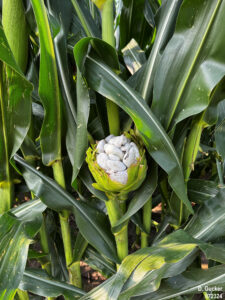
Figure 7: Leaf and stalk damage from the July storms is evident now.
Talon Becker – Commercial Agriculture Specialist
Champaign County
Soil Conditions: Moderately Wet (soil is damp, standing water may be present in low areas, water bodies are full)
It’s been another wet week in Champaign County. While starting my survey in the southern half of the county on Wednesday (7/31) this week, yet another front was moving through the area with more rain in the forecast for the coming days. Although we have seen frequent storms, the Illinois Soil and Water Survey weather station in Champaign received only approximately 1 inch of rain in total in the past 7 days, with perhaps a bit more in the southwest portion of the county. In that part of the county, there were a few fields with flooded out areas, but crop loss from outright flooding or diseases associated with waterlogged soils appears to still be relatively minimal, with most corn and soybean fields in the county still looking very healthy. Soils were obviously wet as I walked through fields, but still firm and not waterlogged in most areas. Corn fields surveyed ranged from R1 to R3, and full-season soybean fields surveyed ranged from R2 to R4. The one field of double-crop soybeans I found was just starting to flower.
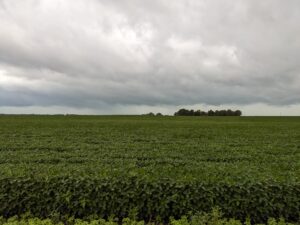
Figure 8: Another storm front moving in over Champaign County
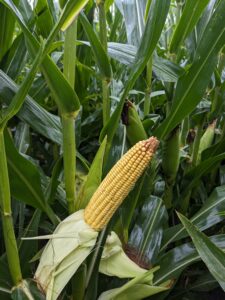
Figure 9: Corn field at late R3 (milk) showing good tip fill
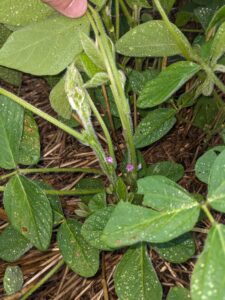
Figure 10: Double-crop soybeans at R1





